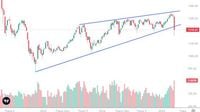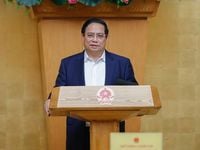On April 6, 2025, during a regular government meeting, Vietnamese Prime Minister Pham Minh Chinh addressed the implications of the United States' newly announced tariff policy, which could significantly disrupt global trade and supply chains. The U.S. has imposed a hefty 46% retaliatory tariff on Vietnamese goods, a move that has raised concerns about escalating trade tensions and potential disruptions in the supply chain.
Prime Minister Chinh emphasized that the Vietnamese government has been actively engaging with U.S. officials across all political and diplomatic channels to address these tariffs. He noted that reactions from various countries have varied, with many experiencing stock market declines and economic instability as a result. "We have taken proactive measures since the beginning of the year to mitigate these impacts," he stated.
The Prime Minister outlined several strategies that the Vietnamese government is pursuing in response to the tariffs. These include negotiating potential tariff reductions with the U.S. and increasing purchases of American goods. He pointed out that while the U.S. is Vietnam's largest export market, it is not the only one. This situation presents an opportunity for Vietnam to restructure its economy towards faster and more sustainable growth, focusing on green and digital transformations.
In the wake of the tariff announcement, the Vietnamese stock market experienced unprecedented turmoil, with the VN-Index plummeting nearly 88 points, marking one of the most significant declines in its history. However, by the end of the week, a bottom-fishing trend emerged, leading to a recovery in stock prices, particularly among large-cap stocks in essential sectors such as banking and energy.
Following the U.S. announcement on April 3, 2025, which included a blanket 10% import tax on all goods entering the U.S. effective April 5, the Vietnamese government convened to discuss the situation. They proposed temporarily suspending the retaliatory tariffs to allow for further negotiations. This move was part of a broader strategy to maintain Vietnam's economic stability and safeguard its sovereignty and territorial integrity.
The Prime Minister’s remarks came amidst a backdrop of heightened global trade tensions, particularly between the U.S. and China, which has also announced retaliatory tariffs. "We must remain calm and flexible in our approach to these new tariff policies," he advised, urging officials to focus on long-term strategies while addressing immediate concerns.
Market analysts have noted that the unexpected U.S. tariff has caused significant market volatility, with many investors reacting with panic. The VN-Index, which had been trading around 1,300 points, dropped sharply to approximately 1,180 points. However, signs of recovery were observed as investors began to assess the situation more rationally, leading to increased buying activity by the end of the week.
General Secretary To Lam's recent phone call with U.S. President Donald Trump has also been viewed as a positive development. During the call, Vietnam expressed its willingness to negotiate for a zero percent import tax on U.S. goods and requested that the U.S. apply similar tariffs on Vietnamese imports. This gesture reflects Vietnam's commitment to fostering a balanced trade relationship with the U.S.
Market experts have suggested that while the immediate impact of the tariffs is severe, there is potential for negotiation that could lead to a reduction of the tariffs to a more manageable level. Predictions indicate that the tariffs could be adjusted to between 20% and 25%, depending on the outcomes of ongoing discussions.
Despite the recent market turmoil, some analysts believe that this could be a pivotal moment for Vietnam to diversify its export markets. With significant reliance on the U.S. for exports, the country may need to explore opportunities in other regions, such as the Middle East, Eastern Europe, and Latin America, to mitigate the risks associated with U.S. tariffs.
As the situation develops, investors are advised to maintain a cautious approach, focusing on sectors less affected by the tariffs and those that can benefit from domestic demand. The Vietnamese government is also expected to implement measures to stimulate growth and support businesses affected by the tariffs.
In conclusion, the Vietnamese government is navigating a complex landscape shaped by external pressures from U.S. tariffs and broader global trade dynamics. The Prime Minister's proactive stance and ongoing negotiations with the U.S. reflect Vietnam's commitment to maintaining economic stability and fostering sustainable growth amidst these challenges.






